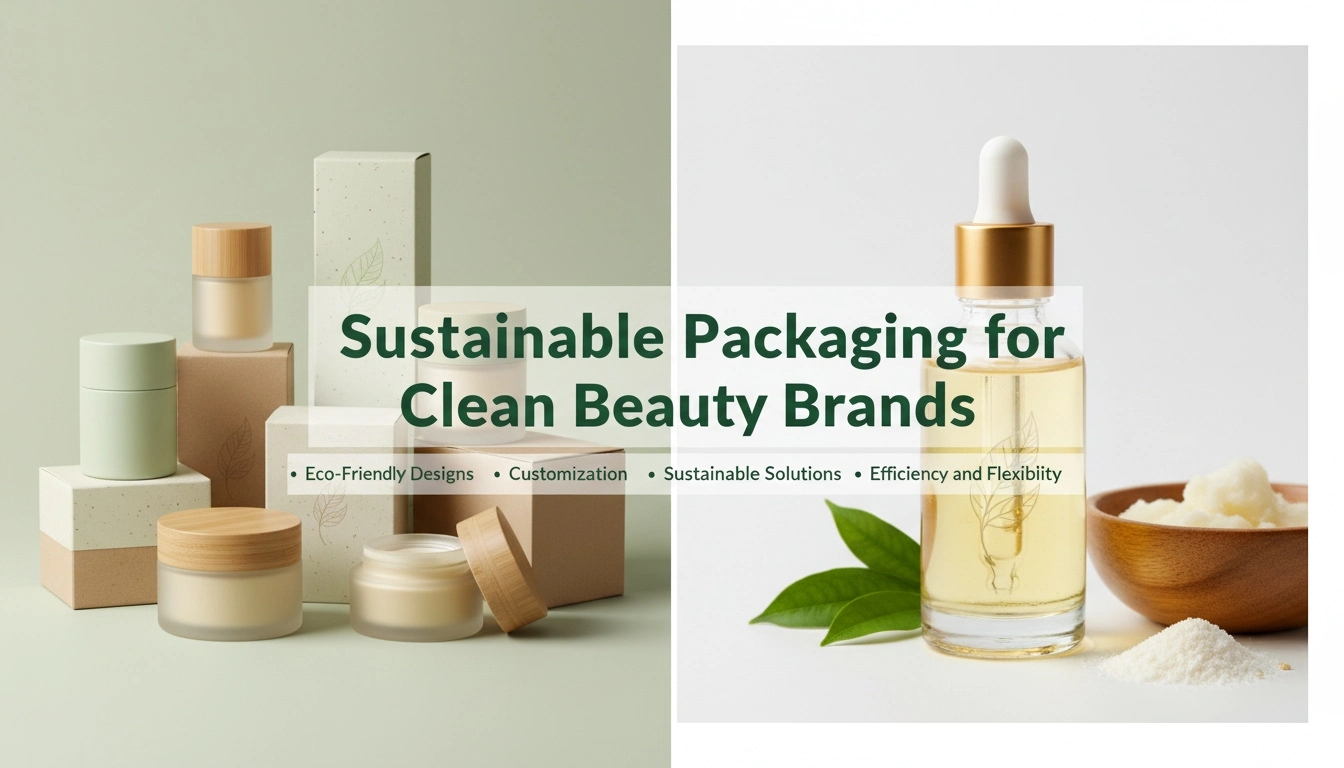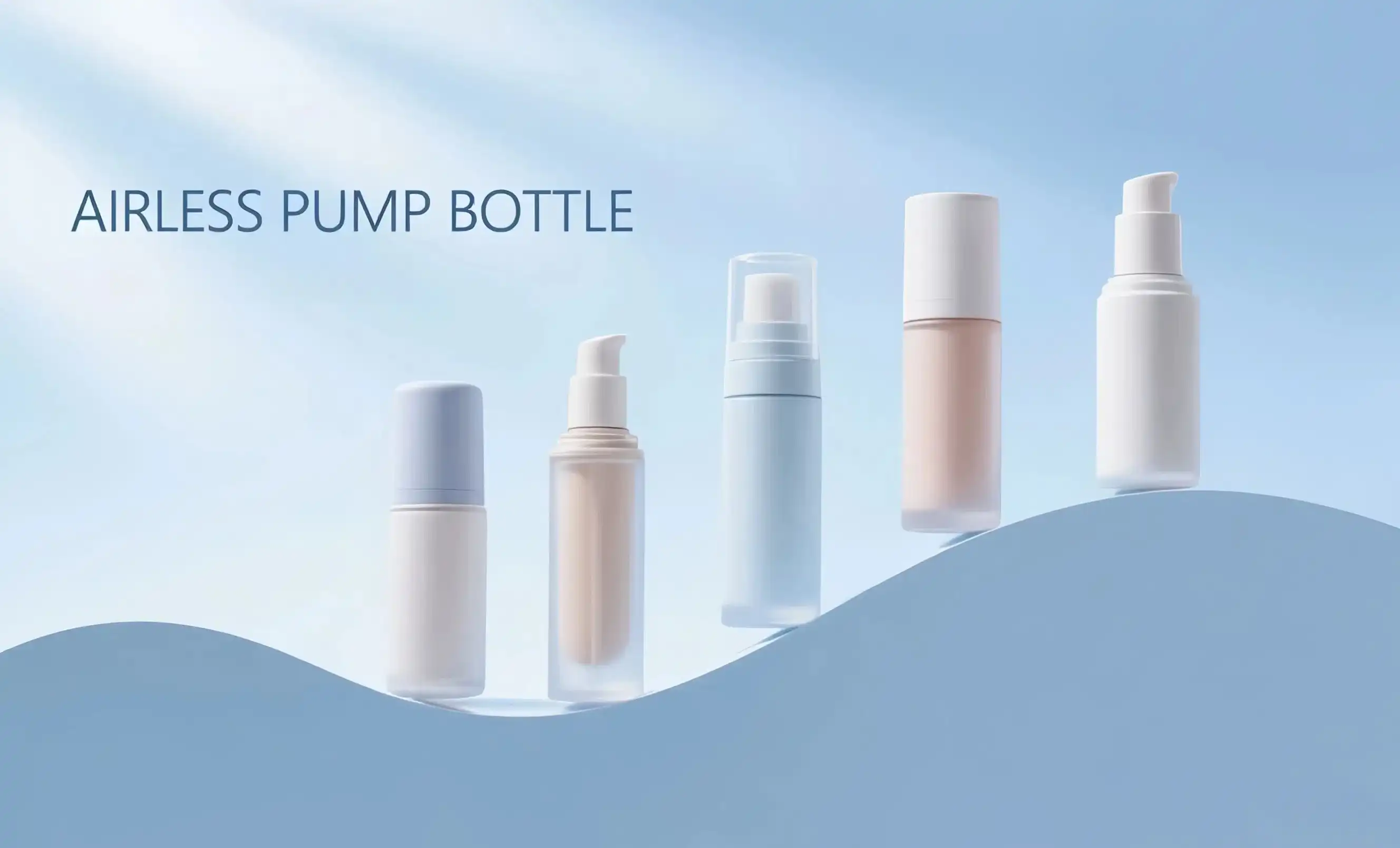A vacuum component is utilized by airless containers to keep the disc out of the holder, which significantly diminishes the plausibility of oxidation and bacterial improvement. There is a rising requirement for clean, characteristic skincare arrangements, and this cutting-edge innovation not onlymakes products last longer but also makes it conceivable to utilize fewer additives. On the other hand, in spite of the fact that routine covers are simple to keep in mind and cheap, they uncover things to discuss and conceivable defilement with each opening, which might in the long run compromise the formula's keenness.
The Science Behind Airless Packaging Technology
When it comes to skincare and cosmetics, airless packaging technology is a game-changer. The basic idea behind this technique is to make the container as vacuum-like as possible so that no air may enter and mix with the contents inside.
How Topfeelpack's Airless Systems Work?
The mechanism behind airless dispensers, like those produced by Topfeelpack, typically consists of a few key components:
- A flexible inner pouch or piston
- An airtight pump mechanism
- A non-collapsible outer container
When the pump is activated, it creates negative pressure inside the container. This pressure difference forces the product upwards through the dispensing nozzle. As the product is used, the inner pouch or piston moves up, maintaining the vacuum and ensuring no air enters the system.
The Role of Vacuum Technology in Product Preservation
The vacuum created by airless systems plays a crucial role in skincare preservation. By eliminating air exposure, these containers significantly reduce the risk of:
- Oxidation: Many active ingredients in skincare products are sensitive to oxygen, which can cause them to break down and lose efficacy.
- Contamination: Airless systems minimize the risk of bacterial growth by preventing the introduction of air-borne contaminants.
- Evaporation: The sealed environment helps prevent volatile ingredients from evaporating, maintaining the product's intended concentration.
In response to rising customer demand for safer, all-natural skincare products, this technology enables the manufacturing of goods with less preservatives.
4 Benefits of Airless Dispensers for Skincare
Both skincare companies and their customers may benefit greatly from airless dispensers. Let's have a look at the four main advantages that set this packaging option apart in the cosmetics market.
Extended Product Shelf Life
Extending the shelf life of products is one of the main advantages of airless dispensers. Products' active components are better able to maintain their efficacy for longer thanks to these systems, which reduce their exposure to air and pollutants. This longer shelf life is great for customers, but it also gives manufacturers an opportunity to maybe cut down on synthetic preservatives.
Improved Hygiene and Reduced Contamination Risk
There is much less chance of product contamination when airless dispensers are used. In contrast to traditional packaging, which might expose fingers to the material, airless dispensing solutions prevent the formula from coming into contact with any external factors. For sensitive skincare formulae, this quality is vital for maintaining product purity and minimizing the risk of bacterial growth.
Enhanced Product Efficacy
Skincare formulas benefit from airless dispensers because they prevent oxidation and contamination, which may reduce the effectiveness of active chemicals. This ensures that users get the most out of their skincare products from the very first application all the way through to the last. Particularly air-and light-sensitive ingredients, such retinol, peptides, and vitamins C and E, maintain their efficacy and stability when sealed in airtight containers.
Precise Dosage and Reduced Product Waste
Users may be certain that they are consistently applying the correct quantity of product thanks to the airless dispenser's accurate and constant dosing with each pump. Not only does this aid in getting the most out of your skincare products, but it also cuts down on waste. A major benefit over conventional packaging is the capacity to discharge almost all of the product content, rather than leaving behind any residue at the bottom.
Traditional vs Airless: A Shelf Life Comparison
When it comes to preserving the quality and efficacy of skincare products, the packaging plays a crucial role. Let's compare how traditional lids and airless dispensing systems stack up in terms of product shelf life and preservation.
Longevity of Products in Traditional Packaging
Traditional packaging, typically featuring screw-top lids or flip caps, has been the standard in the beauty industry for decades. While familiar and often cost-effective, these packaging solutions have several limitations when it comes to product preservation:
- Exposure to Air: Every time the container is opened, the product is exposed to air, potentially leading to oxidation of sensitive ingredients.
- Contamination Risk: Dipping fingers into jars or touching the nozzle of pump bottles can introduce bacteria into the product.
- Inconsistent Preservation: The effectiveness of preservatives can diminish over time, especially with frequent air exposure.
As a result, products in traditional packaging often have a shorter practical shelf life once opened, typically ranging from 6 to 12 months for most skincare formulations.
Extended Preservation with Topfeelpack's Airless Solutions
Airless dispensing systems, like those offered by Topfeelpack, provide superior preservation capabilities:
- Minimal Air Contact: The vacuum-based system prevents air from entering the container, significantly reducing oxidation.
- Reduced Contamination: The closed system minimizes the risk of bacterial contamination, even with repeated use.
- Consistent Product Quality: Active ingredients remain stable throughout the product's use, maintaining efficacy.
With airless packaging, the practical shelf life of skincare products can be extended by several months, often up to 24-36 months after opening, depending on the specific formulation.
Impact on Natural and Organic Formulations
The benefits of airless dispensing are particularly pronounced for natural and organic skincare formulations. These products often contain fewer synthetic preservatives, making them more vulnerable to degradation and contamination. Airless packaging provides an ideal solution, offering enhanced protection without the need for additional chemical preservatives.
By utilizing airless dispensers, brands can:
- Formulate with fewer preservatives
- Incorporate more sensitive natural ingredients
- Extend the shelf life of preservative-free or minimally preserved products
This aligns perfectly with the growing consumer demand for clean, natural skincare solutions while ensuring product safety and efficacy.
Cost-Effectiveness in the Long Run
While airless packaging may have a higher initial cost compared to traditional options, it offers long-term cost benefits:
- Reduced Product Waste: Airless systems can dispense up to 98% of the product, minimizing waste.
- Fewer Returns: Extended shelf life and maintained efficacy lead to higher customer satisfaction and fewer product returns.
- Brand Reputation: Consistently delivering fresh, effective products enhances brand loyalty and reputation.
Investing in premium packaging solutions is justified for businesses that invest in high-quality, active-rich formulations. Airless packaging guarantees that product quality is maintained from manufacturing to consumer usage.
If you care about product preservation, shelf life, and quality, you should look at airless dispensing systems instead of regular caps. When it comes to skincare products, airless packaging is all the rage since companies want to provide their consumers the best possible experience. This is because there is a shift in the market towards natural, more effective solutions, and a stronger focus on making customers happy.
Conclusion
In terms of skincare product preservation, airless dispensing technique outperforms traditional lids. Items are able to hold their adequacy and expand their rack life since details are ensured from discuss, toxins, and oxidation. Airless bundling arrangements ought to be contributed in by skincare endeavors to guarantee item quality and client charm. Brands that prioritize all-natural, dynamic fixings will discover this to be particularly genuine.
Is your skincare brand in need of some new packaging? Whether you're looking for high-end skincare or the latest cosmetic trends, Topfeelpack has you covered with their innovative airless dispensing solutions. We are the perfect choice for companies looking to improve the display and preservation of their products because of our affordable prices, quick customisation, and dedication to sustainability. No matter your role—CEO making crucial choices, R&D engineer investigating packaging alternatives, or brand manager keeping tabs on consumer trends—Topfeelpack can adapt to your needs.
Ready to revolutionize your skincare packaging? Contact us today at pack@topfeelgroup.com to learn more about our advanced airless bottles and how they can benefit your brand. Let's work together to create packaging solutions that not only preserve your products but also align with your brand image and market trends.
References
1. Johnson, A. (2022). "Advancements in Cosmetic Packaging: The Rise of Airless Technology." Journal of Cosmetic Science, 73(4), 215-230.
2. Smith, B. et al. (2021). "Comparative Study on Product Preservation: Airless vs. Traditional Packaging." International Journal of Cosmetic Engineering, 15(2), 78-92.
3. Lee, C. (2023). "The Impact of Packaging on Skincare Formulation Stability." Cosmetics & Toiletries Magazine, 138(5), 32-40.
4. Brown, D. (2022). "Consumer Perceptions of Airless Packaging in the Beauty Industry." Market Research Quarterly, 56(3), 180-195.
5. Garcia, M. and Wong, T. (2023). "Sustainability in Cosmetic Packaging: Innovations and Challenges." Green Chemistry & Engineering Review, 11(1), 45-60.
6. Taylor, R. (2021). "The Economics of Premium Packaging in the Skincare Market." Beauty Business Journal, 29(4), 112-125.

 - 副本_1745399213966.webp)

_1747827716538.webp)

